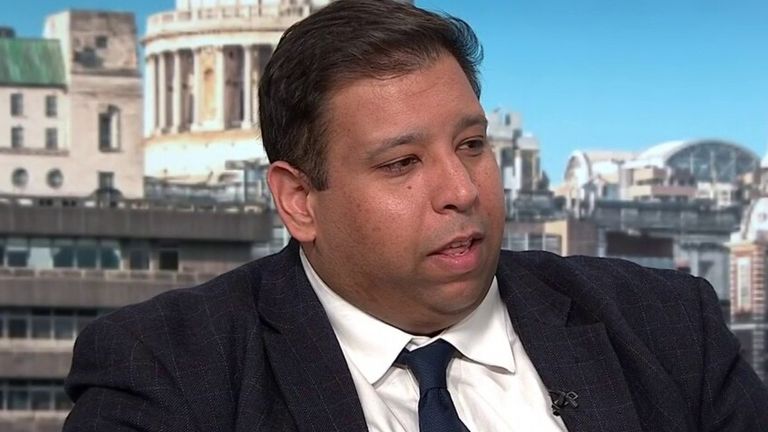The rate of inflation has eased slightly but still remains above 10%, according to official figures showing record costs for some essential foods.
The Office for National Statistics (ONS) said the consumer prices index (CPI) measure slowed to 10.1% in March from 10.4% the previous month.
Economists had largely expected a figure of 9.8%.
The figure represents a slight improvement in the energy-driven cost of living crisis as fuel prices fell back below levels seen a year ago when Russia’s war in Ukraine prompted a spike in oil costs.
However, upwards pressure remained from household gas and electricity costs and food, including essentials such as bread, milk and eggs.
February’s inflation data had already shown an additional hit from the salad shortage that had gripped supermarkets that month.
ONS chief economist Grant Fitzner said of the easing in overall inflation in March: “The main drivers of the decline were motor fuel prices and heating oil costs, both of which fell after sharp rises at the same time last year.
“Clothing, furniture and household goods prices increased, but more slowly than a year ago.
“However, these were partially offset by the cost of food, which is still climbing steeply, with bread and cereal price inflation at a record high.
“The overall costs facing business have been largely stable since last summer, although prices remain high.”
The latest figures were released against a backdrop of hopes that a deceleration in inflation would allow the Bank of England to pause its action to battle inflation through interest rate rises.
It has raised Bank rate at 11 consecutive meetings since December 2021 in a bid to keep a lid on price pressures in the economy.
While policymakers can do nothing about things like energy – the main driver of the inflation crisis – the Bank can look to take demand out of the economy by raising borrowing costs.
It will have been encouraged by the easing in the headline rate of inflation.
But a separate measure closely-watched by the Bank that strips out volatile price elements, known as core inflation, remained static at 6.2%.
Employment data released on Tuesday also showed that wages continued to creep upwards, albeit at levels well below CPI.
The Bank has previously expressed worries that wage rises seeking to combat the hit to household budgets from inflation, which have come into sharp focus during the winter strikes across the economy, risk stoking inflation ahead.
Chancellor Jeremy Hunt responded: “These figures reaffirm exactly why we must continue with our efforts to drive down inflation so we can ease pressure on families and businesses.
“We are on track to do this – with the OBR (Office for Budget Responsibility) forecasting we will halve inflation this year – and we’ll continue supporting people with cost-of-living support worth an average of £3,300 per household over this year and last, funded through windfall taxes on energy profits.”

